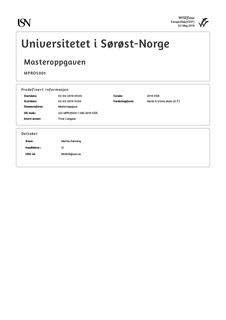| dc.description.abstract | Purpose: The purpose of this study was to estimate the prevalence and distribution of alpha, beta and gamma parapapillary atrophy in diabetic adults over the age of 40 years, as identified by the means of spectral domain optical coherence tomography (SD-OCT).
Methods: All subjects underwent anamnesis, subjective binocular refraction and imaging with SD-OCT in both eyes. The obtained OCT sections provided 24 degree sections for assessment of the parapapillary retina, which were analysed for the presence of alpha, beta and gamma parapapillary atrophy.
Results: 135 eyes of 70 subjects, with mean age of 61.33 years (range: 43-81, SD: 9.68) was included. Alpha parapapillary atrophy was found in 100 % of eyes. The atrophy occurred least frequently in the 240 degree section in right eyes, and in the 270 degree section in left eyes, but was evenly distributed in the parapapillary area with frequencies above 90 %. The prevalence of beta parapapillary atrophy was 77.6 % (CI: 67.6, 87.6) in right eyes, 66.2 % (CI: 55.9, 77.4) in left eyes, and was present in both eyes in 60.0 % (CI: 55.9, 77.4) of subjects. The difference in prevalence between right and left eyes was not statistically significant (p = 0.118). The atrophy occurred most often in the 345 degree section in right eyes and in the 15 degree section in left eyes, meaning temporally. Beta parapapillary atrophy was least frequent in the 195 degree section in right eyes and in the 225 degree section in left eyes, in other words nasally and inferonasally, respectively. The distribution of frequencies increased evenly from the least frequent to the most frequent degree section. Gamma parapapillary atrophy was found in 22.4 % (CI: 12.4, 32.4) of right eyes and 22.1 % (CI: 12.2, 32.0) of left eyes, which was not a statistically significant (p = 1.0) difference. Gamma parapapillary atrophy was present in both eyes in 20.0 % (CI: 10.3, 29.7) of subjects. The prevalence was highest in the 345 degree section in right eyes and in left eyes in the 300 degree section, meaning temporally and inferotemporally, respectively. The atrophy was not present in the degree sections from 90 through 225 in right eyes and from 75 through
225 degrees in left eyes. The distribution of frequencies started supratemporal, and had a steady increase towards the temporal and inferior area, before having a smooth decrease towards the inferonasal part.
Conclusion: The findings in this study corroborate with previous studies and provides
further clinical knowledge of parapapillary atrophies when using OCT. | nb_NO |
